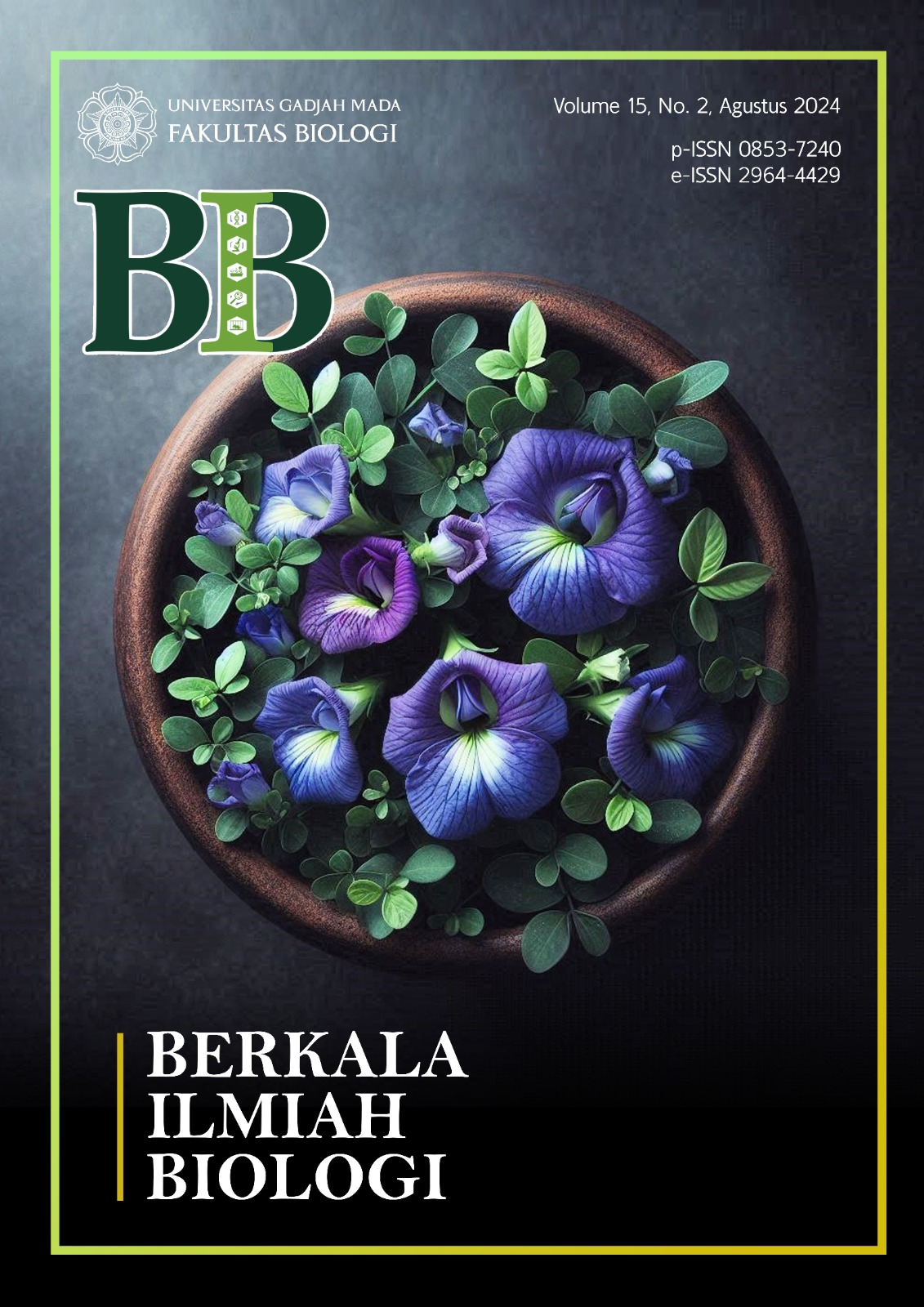Variation and Phenetic Relationship of Passiflora spp. in Yogyakarta Based on Morphological and Anatomical Characters
Main Article Content
Abstract
Passiflora spp. or passion fruit is a tropical plant that is often used as a food source. The large morphological variations of Passiflora cause difficulties in identifying the species. The objectives of the study are to identify the specific morphological and anatomical characters of Passiflora spp. in Yogyakarta and to determine their phenetic relationship for identification. A total of 15 samples of Passiflora were taken by purposive sampling technique from Bantul, Sleman, Kulon Progo, and Yogyakarta City, and then carried through the morphological and anatomical characterization. The morphological characters observed stems, leaves, and flowers, while the anatomical characters observed leaves. The results show that the observed samples are identified as four species, P. foetida, P. vitifolia, P. edulis, and P. quadrangularis. The P. edulis species consists of two forms, P. edulis f. flavicarpa and P. edulis f. edulis. The variation of morphological character lie in young stem shape, leaf shape, the texture of stem and leaf surface, bract shape and color, sepal and petal color, and the presence of a purple corona ring. While the variation of anatomical characters lie in the pattern of the vascular bundles, the shape of the upper and lower sides of the leaf veins, the shape and size of the palisade cells, as well as the type and density of stomata. Based on the phenetic analysis on the 0.8 phenon line, four main clusters were formed, P. foetida, P. vitifolia, P. edulis, and P. quadrangularis.
Article Details

This work is licensed under a Creative Commons Attribution 4.0 International License.


